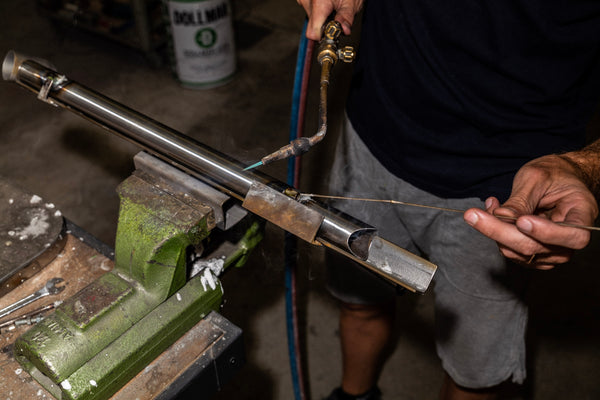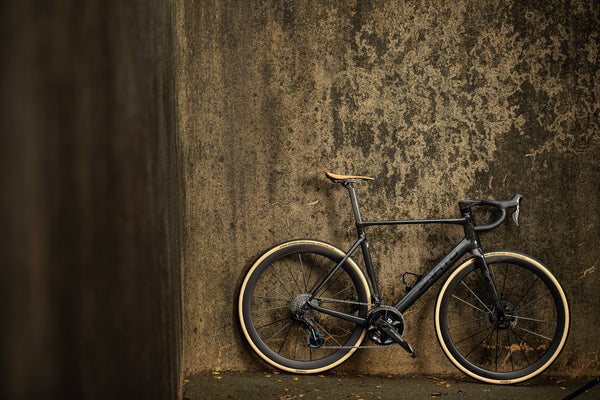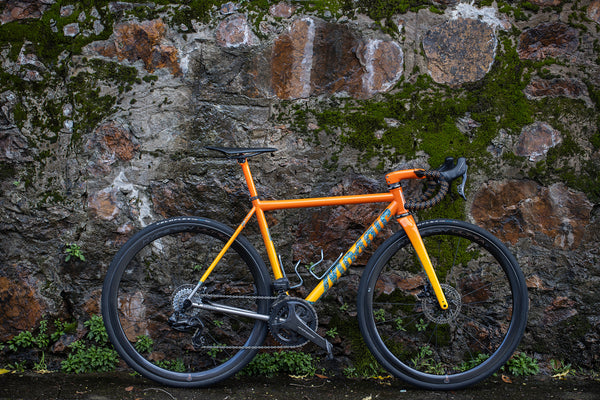Granted, doing it wrong can literally cost you your skin, but for some reason there’s a lot of hype and mystery surrounding the gluing on of tubular tires. Back before you could type a phrase into your man machine interface and see the collected wisdom of the world on any subject, tubular tire gluing methods were absolutely steeped in mystery and handed down one rider to the next. Now figuring most if it out is as simple as sear hing the internet.
Even eBay has a guide to gluing on tubs.
But, short of having a direct line into the mind of Julien Devries the definitive resource on methods and glue types comes in this multi-part dissertation ‘Tubular Tire Adhesion Performance’ from the University of Kansas. What must be the result of a lot of time to kill in the winter, this nine-part study is probably not required reading for anyone short of the think tank that’s trying to find Lance a few extra minutes for this year’s Tour.
Instead of going through a whole step-by-step, which you can find at the links above and elsewhere, it’s probably best to bullet point out some of the most useful information we’ve learned in the last 25 or so years that we’ve been gluing on tubs. Here goes:
- Slow down: gluing on tires is the opposite of taping out an message on your Blackberry. Take some deep breaths and enjoy the process and focus on doing an incredible job. Taking the time to glue on a pair of tubular tires is as much a luxury as riding tires that you essentially can’t repair.
- Clear a runway: make sure you have plenty of time for the job at hand. For me it takes about 30 minutes to get set-up and get one coat of glue on two rims.
- Be sure you’re stretched your tires on a rim or unused wheel for at least a week. Inflate to 75psi or so while stretching the tire.
- When storing tubulars keep them in a dark, dry place and do not store them folded up.
- If you’re gluing up new rims, even carbon rims, step one has to be knocking off any dirt and oil that might be lurking about on the rim with something like acetone. If you are using carbon rims, be sure to check with the manufacturer before applying any chemicals to the surface of the hoop. One wrong move could cost you a few grand.
- Check the basetape of the tire you’re going to glue on. If it has a coat of clear, smooth latex or other on it, be sure to scrape it or rough it up off with a dull kitchen knife. Don’t use a razor knife for this step as you may cut the tire (that’s experience talkin’.)
- Unless you’re gluing up cross tires to carbon rims, don’t substitute ‘tubular tape’ for glue. While it can work miracles when used with glue for cross riding, our experience it’s not nearly as good as a few coats of Vittoria Mastik.
- Use very light coats of glue. Thick coats take longer to dry, weigh more and are less effective because they allow the tire to move a little more on the rim.
- Use a small paintbrush to apply the glue, not a sponge or your finger. While they don’t last more than a coat, it’s best to not go with the cheapest brush you can find. Cheap brushes shed bristles which find their way between your rim and tire. Not good.
- Use at least two coats of glue on the rim and one good one on the basetape of the tire. Don’t apply the glue to the tires until you’re already on your second coat of glue for the rim.
- Even if you’re using a rim that has previously had a tire glued to it, be sure to use two light coats of glue instead of just one.
- Allow the coats of glue on the rim to dry as long as possible, overnight is best. Be sure the wheel is in a warm and dry place--that will help the adhesive cure quickly and completely.
- When mounting the tire to the rim, start with the value and go very slowly. Check to make sure the valve stays straight in the valve hole as you pull the tire on.
- Both while mounting the tire and after it is completely on the rim, make sure that it is as straight as can be. Check this by watching the placement of the basetape in relation to the sidewall of the rim.
- Inflate glued-on tires to about 120PSI
- Give them 24 hours to set-up before riding and 48-hours before racing. Yes, you can ride them right away with most kinds of glue, but it’s far from the best idea.
- If you don’t have the time, energy or money to deal with all of this, just ride clinchers! The reality of the technology these days is that clincher wheels feel pretty snappy on the road and an ‘open tubular’ is pretty similar in ride quality to a traditional tubular.








Back to Journal